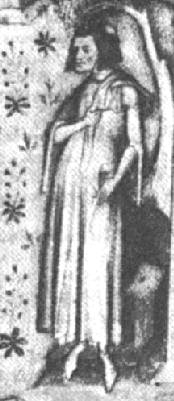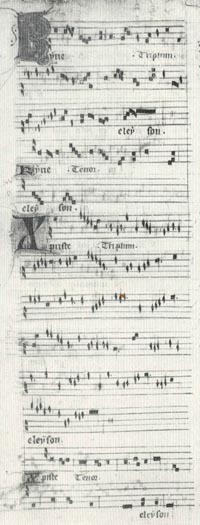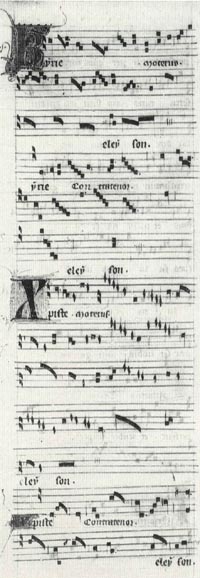In the thirteenth century there began to appear anonymous manuscripts containing settings of the complete Ordinary (the Kyrie, Gloria, Credo, Sanctus, Agnus Dei and Ite Missa Est). It is uncertain if the manuscripts collected together various settings of sections of the Mass or if they were intended to be performed as a whole. There was nothing - a repeating motive, or a similarity in compositional style - that tied the individual parts together. By the mid-1300s this changed with the composition of Guillaume de Machaut's Mass of Our Lady, the earliest known polyphonic setting of the Mass by a single composer. Why Guillaume composed it has been subject of a heated debate in musicological circles for some time. The first scholars felt that it was written for the coronation of Charles V in 1364: the cathedral at Rheims, (map), where Machaut had been a canon since the 1340s, was traditionally the site for French coronation ceremonies. Later scholarship, using the name as an entrypoint and confirmed by the use of Kyrie IV as a cantus-firmus, felt that the Mass was written for a Marian feast day, such as the Nativity. Other scholars believe that it was a written for performance during memorial Masses endowed through a fund provided by Guillaume Machaut and his brother and in their honor. It has remained an important and influential work to this day. (Compare Stravinsky's Mass of 1948)
Guillaume de Machaut is not only known as perhaps the finest composer of the fourteenth century, but also as one of the finest French poets of the time. Machaut was likely born in 1300 in Rheims and is believed to have studied in Paris. Records later show him travelling throughout Europe in the retinue of John of Luxembourg, king of Bohemia. By 1340 he returned to Rheims and took up a career as a canon at the cathedral. He had a small home attached to the cathedral and from there devoted himself to writing music and poetry. In his later years he began a relationship with a young woman named Peronne. The hunchbacked and elderly Machaut appears to have truly been in love, a love that was unrequited. The two shared many letters and often Machaut would send his compositions to the young woman. It is from their correspondence that we begin to have record of the notion of reading music from a notated score - a novel idea in the fourteenth century. In his later years, Machaut set about the task of compiling his life's work for posterity.

Guillaume de Machaut (1300-1377)

